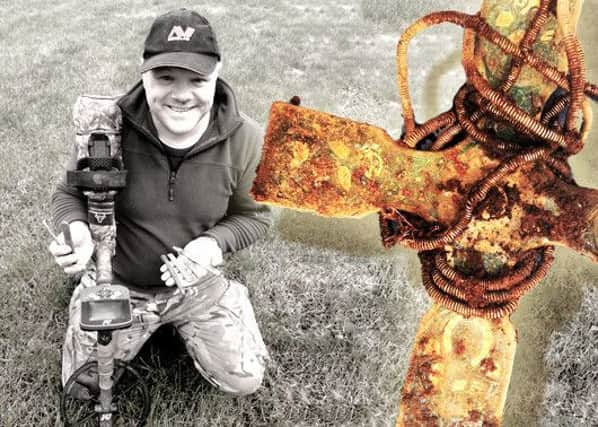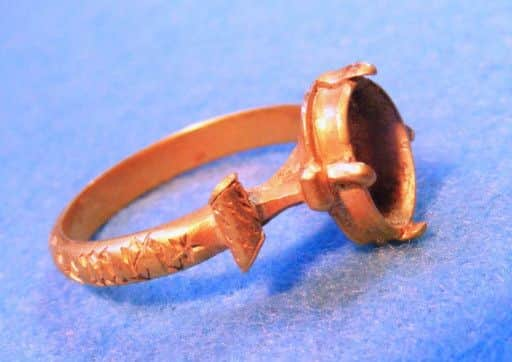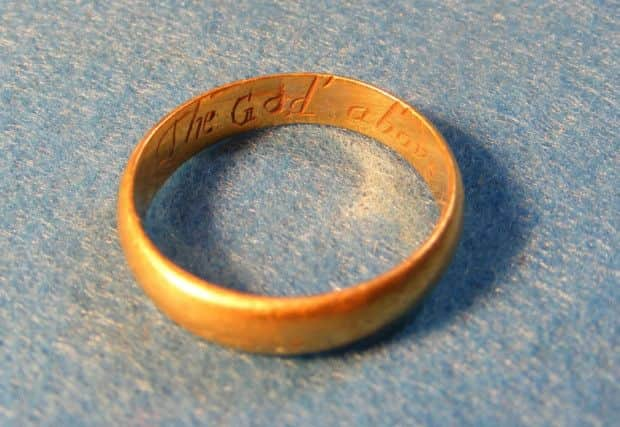Metal detectorists make 300 significant finds in Scotland


Almost 300 significant finds were placed in museums across the country after being found by members of the public and referred to the Treasure Trove Unit - which secures items of behalf of the nation.
Last year, 294 members of the public contacted the Treasure Trove Unit, which works on behalf of the Crown, with news of their discoveries.
This was up from 265 the year before.


Advertisement
Hide AdAdvertisement
Hide AdWhile some members of the public waive their fees, £67,580 was paid out to finders in 2014/2015 - up from just over £50,000 the year before.
The items were examined over two meetings of the evaluations panel held in July and Novemebr 2014.
Money paid out by the unit last year would have risen to just over £92,035 had a third panel meeting scheduled for March this year not been postponed.
The total does not include the Viking hoard discovered in Dumfries and Galloway in October 2014 by metal dectorists Derek McLennan on Church of Scotland land.


During 2014/2015, finders fees ranged from between £20 and £20,000. the latest annual report from the Treasure Trove Unit (TTU) shows.
Both Perth and Kinross and the Borders recorded the highest number of Treasure Trove cases with 17 significant discoveries - either chance finds or archaeological assemblages discovered by professionals - made in each area.
Finds in Perth and Kinross inlcuded a medieval silver finger ring discovered at Bankfoot.
Advertisement
Hide AdAdvertisement
Hide AdIt now sits in Perth Museum and Art Gallery, with the finder paid £1,500 by the Treasure Trove Unit (TTU).
A medieval gold finger ring found at Loch Leven was one of the most significant discoveries by a member of the public last year.
While its stone is missing, TTU described the ring as “undoubtedly a high quality piece that would represent a challenge to the medieval goldsmith and in both complexity and form this is an unsual survival in a Scottish context.”
The ring now sits in National Museums Scotland, its finders fee undisclosed.
Other significant finds include a 17th Century finger ring found at Inverbervie, Aberdeenshire, which is inscribed with the romantic poesy ‘God above incress out love”.
Its finder received £700 with the ring allocated to Aberdeenshire Heritage at Mintlaw.
In Angus, 12 discoveries were made, with several large medieval coin hoards found at Kirriemuir.
In Edinburgh, 10 finds - either by the public or as part of an organised dig - were made with a middle bronze age axehead discovered near Ratho one of the key discoveries.
Advertisement
Hide AdAdvertisement
Hide AdIts finder received £300 from the TTU with the piece now allocated to East Lothian Council Museums Service now holding the piece.
In Highland, a member of the public discovered a bronze torq, designed to be worn round the neck, which the first of its kind found in Scotland.
Found at Nairn, experts at the TTU believe the piece was worn regularly by its owner and dates back to the 1st or 2nd Century AD. A “massive and highly decorated” brooch was also found.
“Both are imposing objects and would have functioned as symbolsof status to demonstrate the importance of the wearer.
“The discovery of two such unusual objects so close together suggest they may have been buried as a ritual act, a religious offering where items are removed from use in this workd and offered instead to the gods.”
The two pieces are now with National Museums Scotland, the finders fee undisclosed.
The number of cases dealt with TTU remained steady last year, with 158 cases of significance handled by the unit.
However, number of items being placed in Scotland’s museums last year fell from from 825 to 284 last year.
The figure would have rised to 469 had the third meeting of the panel not been postponed.
Just over 1,650 individual items were referred to the unit by members of the public in total.